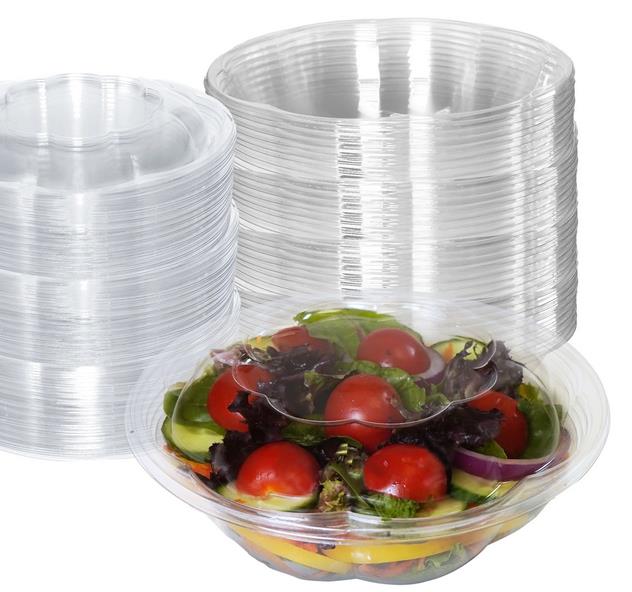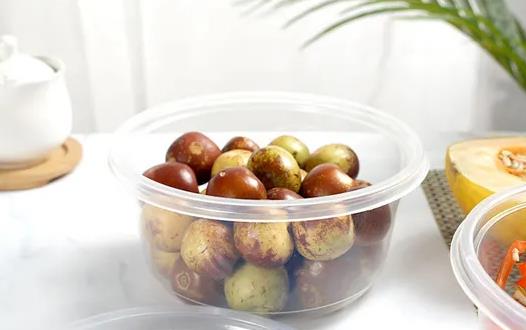
Content Menu
● Understanding Disposable Serving Bowls
>> Types of Disposable Serving Bowls
● Are Disposable Serving Bowls Leak-Proof?
>> Factors Contributing to Leak-Proof Design
>> Testing for Leak-Proof Capabilities
● Are Disposable Serving Bowls Microwave Safe?
>> Key Considerations for Microwave Safety
>> Testing Microwave Safety
● Benefits of Using Disposable Serving Bowls
● Environmental Impact of Disposable Serving Bowls
>> Biodegradable Options
>> Recycling Considerations
● Choosing the Right Disposable Serving Bowl
● Creative Uses for Disposable Serving Bowls
● Conclusion
● FAQ
>> 1. Can I microwave all types of disposable bowls?
>> 2. How can I tell if a paper bowl is leak-proof?
>> 3. Are biodegradable bowls safe for microwaving?
>> 4. What materials should I avoid in disposable serving bowls?
>> 5. Can I reuse disposable serving bowls?
In today's fast-paced world, disposable serving bowls have become a staple for many households and events. They offer convenience, ease of cleanup, and a range of options suitable for various food types. However, concerns about their safety, particularly regarding leakage and microwave use, often arise. This article will explore the characteristics of disposable serving bowls, focusing on their leak-proof capabilities and microwave safety.

Understanding Disposable Serving Bowls
Disposable serving bowls are designed for single-use applications, making them ideal for parties, picnics, and quick meals. They come in various materials, including plastic, paper, and biodegradable options. Each type has its unique properties that affect its usability in different situations.
Types of Disposable Serving Bowls
- Plastic Bowls: Made from materials like polypropylene (PP) or polystyrene (PS), these bowls are lightweight and durable. They are often used for both hot and cold foods.
- Paper Bowls: Typically made from recycled paper or coated with a thin layer of plastic or wax for moisture resistance. These bowls are eco-friendly but may have limitations regarding heat exposure.
- Biodegradable Bowls: Crafted from natural materials such as sugarcane bagasse or cornstarch. These bowls break down more easily in the environment compared to traditional plastics.
Are Disposable Serving Bowls Leak-Proof?
One of the primary concerns when using disposable serving bowls is whether they can hold liquids without leaking. The leak-proof quality is essential, especially when serving soups or saucy dishes.
Factors Contributing to Leak-Proof Design
- Material Quality: High-quality disposable bowls are designed to withstand moisture without leaking. For instance, heavy-duty plastic bowls are often engineered to handle liquids effectively.
- Sealed Edges: Many disposable bowls feature sealed edges that prevent leaks during transport or when filled with liquid foods.
- Coatings: Paper bowls with a plastic or wax coating provide additional protection against leaks. However, it's crucial to ensure that these coatings are safe for the intended use.
Testing for Leak-Proof Capabilities
To determine if a disposable bowl is leak-proof:
1. Fill the bowl with water and allow it to sit for a few minutes.
2. Check for any signs of leakage from the bottom or sides.
3. If possible, test it with food items similar to what you plan to serve.

Are Disposable Serving Bowls Microwave Safe?
Microwave safety is another critical aspect when choosing disposable serving bowls. Not all materials can withstand microwave heat without warping or releasing harmful chemicals.
Key Considerations for Microwave Safety
- Material Type:
- Plastic Bowls: Look for those labeled as microwave-safe made from PP; they can generally handle microwave heat without issues.
- Paper Bowls: Ensure they are specifically marked as microwave-safe. Some paper bowls may contain coatings that can melt or leach chemicals when heated.
- Heat Resistance:
- Heavy-duty plastic bowls are often designed to withstand high temperatures.
- Biodegradable options may not always be suitable for microwaving due to their composition.
Testing Microwave Safety
To test if a bowl is microwave-safe:
1. Place a cup of water in the microwave alongside the bowl.
2. Heat on high for one minute.
3. If the bowl remains cool while the water heats up, it is likely microwave-safe.
Benefits of Using Disposable Serving Bowls
Using disposable serving bowls offers several advantages:
- Convenience: Ideal for gatherings where cleanup needs to be minimal.
- Hygiene: Single-use bowls reduce the risk of cross-contamination.
- Variety: Available in multiple sizes and designs to suit different occasions.
Environmental Impact of Disposable Serving Bowls
While disposable serving bowls offer convenience, their environmental impact is a growing concern. Traditional plastic products contribute significantly to landfill waste and pollution. However, advancements in biodegradable materials provide more sustainable options.
Biodegradable Options
Biodegradable serving bowls made from materials like sugarcane pulp or wheat straw break down more easily than conventional plastics. These options are becoming increasingly popular among environmentally conscious consumers.
Recycling Considerations
Some disposable serving bowls can be recycled if properly sorted and processed. However, many facilities do not accept contaminated items (like those with food residue), which limits recycling opportunities. Therefore, it's essential to check local recycling guidelines before disposing of these items.
Choosing the Right Disposable Serving Bowl
When selecting a disposable serving bowl, consider the following factors:
- Purpose: Determine what type of food you will serve (liquid vs solid) and select accordingly.
- Material: Choose between plastic, paper, or biodegradable based on your needs and environmental considerations.
- Size: Ensure the bowl is large enough for your intended use but not so large that it takes up unnecessary space.
- Brand Reputation: Opt for reputable brands known for quality products that meet safety standards.
Creative Uses for Disposable Serving Bowls
Disposable serving bowls can be used creatively beyond just food service:
- Craft Projects: Use them as palettes for paint or as bases for craft projects.
- Organizational Tools: They can help organize small items like screws or beads in workshops.
- Pet Feeding: Ideal for feeding pets during travel or outdoor activities.
Conclusion
Disposable serving bowls can be both leak-proof and microwave safe when you choose the right materials and brands. Heavy-duty plastic and specially designed paper options offer reliable solutions for serving various foods without worrying about leaks or safety during reheating. As environmental concerns continue to rise, opting for biodegradable options can help mitigate some negative impacts associated with single-use products while still enjoying the convenience they provide.

FAQ
1. Can I microwave all types of disposable bowls?
Not all disposable bowls are microwave-safe; check for labels indicating microwave compatibility before use.
2. How can I tell if a paper bowl is leak-proof?
Look for sealed edges and test by filling it with water before using it for food.
3. Are biodegradable bowls safe for microwaving?
Some biodegradable bowls may not withstand high temperatures; always check the manufacturer's guidelines.
4. What materials should I avoid in disposable serving bowls?
Avoid polystyrene (PS) as it can release harmful chemicals when heated; opt for polypropylene (PP) instead.
5. Can I reuse disposable serving bowls?
While some durable options may allow light reuse, most are designed for single use only to maintain hygiene standards.

















